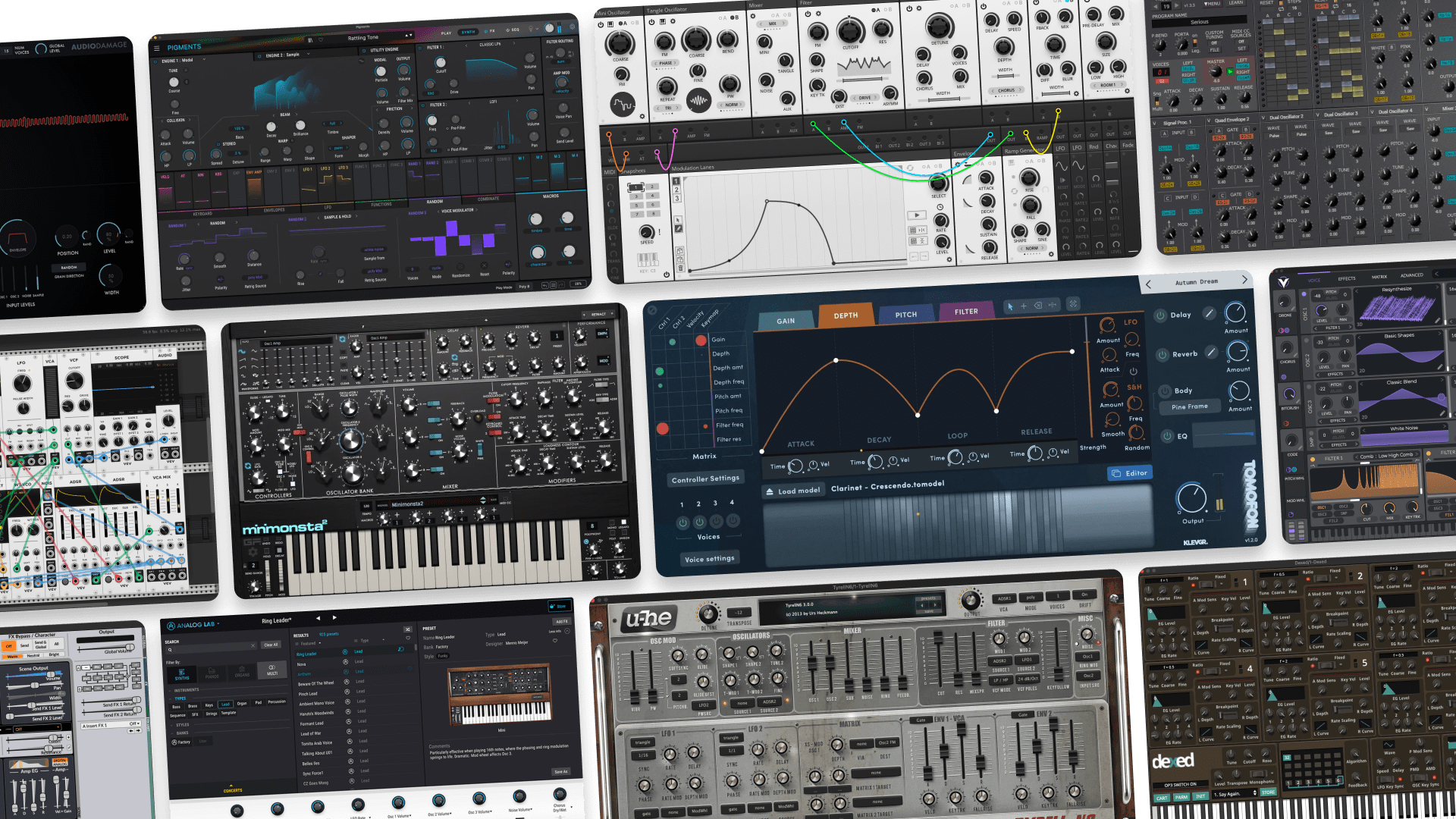
Comb Filtering: How to Avoid Tinny Sound

Recording music gets you thinking about the fundamentals of sound.
As you build your skills as a producer, you’ll encounter plenty of technical concepts that affect how your mixes turn out.
An important one to know is called comb filtering. It’s a unique phenomenon that’s sometimes used as an audio effect—but can also wreak havoc on your mix.
In this article, I’ll unpack the term, explain where it’s useful and where you need to avoid it in your workflow.
Let’s get started.
What is comb filtering?
Comb filtering is a form of destructive interference that occurs when very similar signals combine together.
For example, imagine a single repeat delay on a track in your DAW. If the delay time is short enough, the two signals will overlap considerably.
The cancellation from the small time differences between the signals occurs in a predictable pattern of peaks and troughs that resembles a fine-tooth hair comb.
Comb filtering sounds like a crunched, metallic version of the original signal with strong harmonics that can sound harsh.
That may sound like it has no musical applications whatsoever, but creative engineers have found plenty of ways to use the effect.
For example, It’s the basis of the flanger style of modulation effect.
But despite those musical uses, accidental comb filtering can still cause problems in a mix.
Comb filtering sounds like a crunched, metallic version of the original signal with strong harmonics that can sound harsh.
I’ll break down how they occur and what you can do to fix them later in this article.
Flanger effects
Let’s start simple—an application of comb filtering that you might recognize is the sound of a flanger effect.
It’s the familiar whooshing jet-plane noise often heard on distorted guitar or studio drums.
First used in the late 60s, the original flanging effect came from two synced tape machines playing the same audio material.
When summed together with a mixer, the engineer would apply slight pressure to the “flange” of the tape reel to slow down the speed of one machine.
As the speed of the second machine changed, the frequencies affected by the comb filtering would shift, creating a striking type of modulation.
The resulting sound is the psychedelic effect heard on classic recordings from the 60s and 70s:
Later, engineers used bucket brigade chip technology from analog delays to create the same results.
In some cases, a slight delay between the two signals means that they don’t overlap perfectly. Instead of stacking together, the delay causes them to cancel out.
This time, an LFO was used to modulate the delay time instead of the engineer’s finger. To enhance the effect, some of the shifted signal was routed back to the flanger’s input. This feedback—or ‘regen’ as it’s sometimes labeled—is responsible for the classic jet plane sweep.
Today’s flanger plugins are based on this concept but include modern conveniences like tempo synced sweep, width or depth controls and LFO waveshape.
Here’s a few fun flanger plugins you can try to hear this effect:
Physical modelling synthesis
Some methods of synthesizing sound are based on simulating real world behaviour with physics.
One such technique is called Karplus-Strong synthesis. The name sounds futuristic, but it’s really just a clever way to imitate a string like you’d find on a guitar or violin.
Interestingly, this synthesis type relies on comb filters to work.
From there things get complicated, but there are plenty of great explainers elsewhere on the web if you’re interested.
If you’re an Ableton Live Suite owner you can experiment with this type of synthesis by using the Tension plugin—it’s a great introduction to what this approach can do! Or if you have a copy of FL Studio you can do the same with the unique Sakura synth.
Destructive comb filtering
With the musical uses out of the way, I’ll break down the type of comb filtering you want to avoid in your mix.
This is the destructive interference that results in tinny, filtered sound. Here’s wow it happens.
Reflections off the hard surfaces in the environment where you record can also lead to comb filtering.
Comb filtering can occur any time two related signals are blended together. I’m talking about signals that are similar enough that they’re almost like copies of one another.
You can encounter this situation whenever you record a source with more than one microphone. It can also happen while using a DI box as well as a microphone to record something like bass guitar.
In some cases, a slight delay between the two signals means that they don’t overlap perfectly. Instead of stacking together, the delay causes them to cancel out.
Take the time to listen to related sources carefully before you record. If you recognize a comb filtering effect you may have to move one of the microphones or change the way you record.
In addition to that, reflections off the hard surfaces in the environment where you record can also lead to comb filtering.
For example, imagine you’re recording vocals in a small room with no acoustic treatment. The first reflection that bounces off a nearby wall combines with the direct sound of your voice when it reaches the mic.
Even this small time delay can result in comb filtering as the two signals combine at the microphone.
Try to avoid setting up your mics too close to hard surfaces like walls and ceilings. Or better yet, create a DIY vocal booth to reduce reflections in your space.
Weird audio effects
Comb filtering is a weird quirk of sound physics, but it has a real effect on your sound.
If you’ve ever wondered why two signals don’t combine the way you expect, you might have already experienced it.
But comb filtering is easy enough to avoid if you know why it happens.
If you’ve made it through this article, you’ll have a clear idea of how to deal with it.
Gear guides, tips, tutorials, inspiration and more—delivered weekly.
Keep up with the LANDR Blog.



